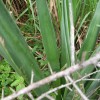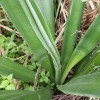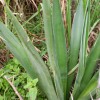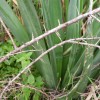- Photos
- Tropical sisal plant
Tropical sisal plant
Hot
ES
Emmanuel Sagini
Updated
Explain more about the photos or videos like location, time and the specific camera settings you would have used to take these photos. Also, if you would have used any accessories or a smartphone app to take the media you are sharing, you can mention them here.
Although its exact origin is unknown, sisal is believed to have started in the Mexican state of Chiapas. Sisal plants can live for seven to ten years and yield 200 to 250 useful leaves that are rich in fibers that can be utilized for a variety of purposes.
Sisal is a tropical and subtropical plant that prefers sunlight and temperatures over 25 °C. In the past, the Mayans and Aztecs made paper and textiles from sisal. In the 19th century, it extended to other parts of the world, with Brazil emerging as the primary producer.
Sisal is cultivated from bulbils or suckers, and tissue culture can be used to enhance its genetic makeup. Decortication is used to extract the fibers, which are subsequently dried, brushed, and baled for export.
Sisal is a tropical and subtropical plant that prefers sunlight and temperatures over 25 °C. In the past, the Mayans and Aztecs made paper and textiles from sisal. In the 19th century, it extended to other parts of the world, with Brazil emerging as the primary producer.
Sisal is cultivated from bulbils or suckers, and tissue culture can be used to enhance its genetic makeup. Decortication is used to extract the fibers, which are subsequently dried, brushed, and baled for export.
Enter the keywords that are relevant to the photos or videos that you will upload with this post.
User reviews
There are no user reviews for this listing.
Already have an account? Log in now or Create an account







